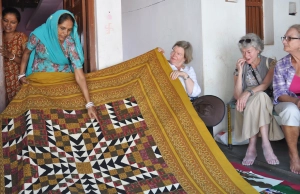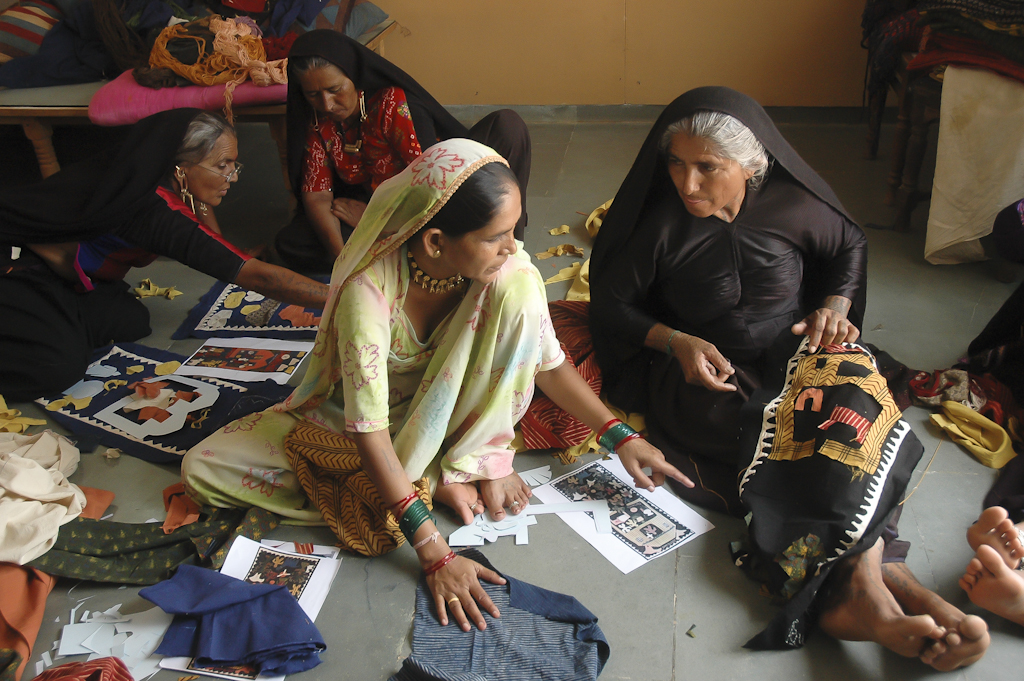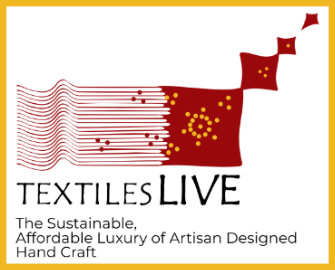WHEN WOMEN DESIGN
 A few years ago, I worked on a film on design in traditional arts. I did not have a script. I used the film to learn how traditional artisans understand design. When we edited all of the footage down to what people have patience for, I gleaned one important understanding: men and women artisans have distinctly different relationships to their art. For men, the concept was there. They had to produce it as well as they could. They could innovate a bit if requested, but they dared not innovate too far, or the identity of the textile would be lost.
A few years ago, I worked on a film on design in traditional arts. I did not have a script. I used the film to learn how traditional artisans understand design. When we edited all of the footage down to what people have patience for, I gleaned one important understanding: men and women artisans have distinctly different relationships to their art. For men, the concept was there. They had to produce it as well as they could. They could innovate a bit if requested, but they dared not innovate too far, or the identity of the textile would be lost.
For women embroiderers, innovation was an intrinsic part of creation. They got their ideas by looking at other women’s work, but they would never copy. They would add something of their own. Copying would mean they were not creative, and embroidery was a means of expressing one’s creativity, identity– it was an expression of one’s self. Besides, there would be no satisfaction in investing so much time and effort without the joy of creative expression.
 Today, both men and women artisan students of Somaiya Kala Vidya are busy finishing their collections for the exhibition they will produce in Mumbai December 3-6, 2014, in just over two weeks. “Craft Re-Defined” is the name they have chosen. Each artisan has re-defined a tradition in his or her own way. This is the first time artisans will present work based on a theme to a sophisticated metropolitan market. And it is the first time they have produced the collections they have designed. It is a major step in becoming independent, truly a post-graduate show.
Today, both men and women artisan students of Somaiya Kala Vidya are busy finishing their collections for the exhibition they will produce in Mumbai December 3-6, 2014, in just over two weeks. “Craft Re-Defined” is the name they have chosen. Each artisan has re-defined a tradition in his or her own way. This is the first time artisans will present work based on a theme to a sophisticated metropolitan market. And it is the first time they have produced the collections they have designed. It is a major step in becoming independent, truly a post-graduate show.
I called Hariyaben about her logo. She had not decided yet and it was the eleventh hour, so I offered her the option of Ralli ni Rani. It was already designed, and it was in fact designed with her in mind. She is the one standing in the “Ralli ni Rani” post.
But she wants her own name, and she came up with Kambole– The Work Speaks.
I asked her how her collection is going?She is producing quilts inspired by the date palm.
She said she had asked Champaben and Nilaben to work on the quilts, but they don’t want to work on a theme.
I said, they just have to produce. They just have to copy your samples, don’t they?
So, she continued, she has gotten four women to sit at her house all day, and they work as they can, trying to interpret the theme.
Oh, no! I thought. She hasn’t understood the concept of production!
But they just have to copy! I cried. That’s what production is!
But no. I had to learn from her. I suddenly realized that Hariyaben was supervising the other artisans to interpret her theme themselves. She was encouraging them to create! For her, this is the work of a designer.
I remembered back, years ago when we had an order for 15,000 narrative works. We had a workshop to show women how to use cardboard templates to cut out the figures. They laid the template to the side and cut freehand, looking at it. Then, I had tried to show them how to use the template.
Hariyaben had said, simply, “We don’t do it that way.” And we did all 15,000 as unique works of art.
Now, eleven months of business and management courses has not changed her clear understanding of her art. Women artisans never ever thought of production. Art still is, for them, personal expression, one of a kind. I can’t wait to see this collection, each unique piece.
We must learn from these amazing Artisan Designers!



